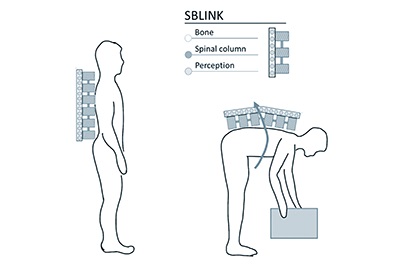
Call for Researchers – by Stefano Foletti, member of the Board in charge of Youth policies
The “Call for Researchers” initiative of the Department of Mechanical Engineering aims to promote research activities suggested, coordinated and carried out by researchers themselves. It is a competitive call for which the candidate, also the scientific director of the project, must choose a research topic and pick a research team to bring diverse skills to the table. Interdisciplinarity is the main application requirement as the goal is to make researchers from different DMEC Research Lines cooperate while involving other Italian and foreign Universities. The 2020 edition aimed to sponsor the projects liked to the topics falling under the LIS4.0 - Lightweight and Smart Structures for Industry 4.0 - a project financed by MIUR (Italian Ministry for Education, University and Research) in the framework of the Department of Excellence initiative. Four are the researchers who took the challenge and brought to life a proposal by building a research team with traversal skills around a single idea: Stefano Arrigoni, presenting the Intelligent Transportation Services for POLIMI (ITS 4 POLIMI) project; Marta Gandolla, presenting the Smart Bio-inspired Link (SBLINK) project; Ali Gökhan Demir, presenting the Laser-Induced Forward Transfer based micro to nanometric multi-material Additive Manufacturing (LIFT4AM) project; and Michele Vignati, presenting the Independently driven vehicles' dynamics and control (iWD) project. Despite having the difficult task to select which project to sponsor, given the quality and high level of organisation and interdisciplinarity of all proposals, the Evaluation Committee claimed it was “a huge success”. According to the criteria indicated in the call, the Committee appointed the SBLINK project as the winner. We hope to have many researchers presenting new projects for the next edition to be published soon.
SBLINK PROJECT – by Marta Gandolla, scientific director
The “Call for Researchers” project call was at first the opportunity to network between peers in the Department, especially for me, since I arrived in September 2020. The SBLINK project is conducted by a multidisciplinary team with strong background in different and complementary enabling technologies (Biomechanics, Design, Materials, Manufacturing, Sensing and Monitoring). We are five young researchers of the Mechanical Department of Politecnico di Milano – Luca Patriarca, Paolo Parenti, Prof. Diego Scaccabarozzi and Niccolò Becattini, and myself – supported by an external advisory board of international acknowledged professors.
Most of the human inventions, such as the wheel back in time, were designed to reduce fatigue, while increasing productivity and assuring safety at the same time. Work-related musculoskeletal disorders are the leading cause of occupational injuries and represent the largest burden for worker-compensation costs and reduced productivity, with most incidence in the lumbar region. Covid-19 pandemic has even increased this effect. Patients' assistance produced a huge incidence of low-back pain in formal and informal caregivers.
Another example of high-risk workers may be those employed in logistics warehouses, which are known as a booming area of employment associated with e-commerce.
The SBLINK project accepts the challenge, with the aim of performing a characterization of the spinal column during target movement, and definition of a simulation environment where to test the effect of assistive technologies solutions on human low-back. We will then realize the physical prototype of a SBLINK demonstrator, conceptually composed by three interconnected layers, which are bio-inspired by the human lumbar region from a functional point of view.
The BONE layer functionally represents the effective structural support. The BONE layer will be composed by vertebras-like small brick elements with specific mechanical characteristics aimed at sustaining the loadings at lumbar level, with small deformation, bio-inspired in terms of structure with different mechanical characteristics depending on the stress to be supported.
The SPINAL COLUMN layer functionally represents the link between the BONE layer elements. The SPINAL COLUMN layer will deal with the interconnection between the brick elements composing the BONE layer.
The PERCEPTION layer functionally represents the ability of the human body receptors to map the level of mechanical stress. The PERCEPTION LAYER will enable the constant mapping of the effective stress conditions at spine level.
By reducing or modifying musculoskeletal loading, devices such as SBLINK can decrease the incidence of workplace injury and reduce the burden of healthcare and lost productivity costs associated with occupationally caused repetitive use injuries.
Finally, we are profoundly sad to announce that Francesco Rosa, a member of the team, died at the beginning of this month. He was in charge of the design of the embodiment of the SBLINK device, a fundamental part of the project just as he was for the team. Despite the sadness of the news, we owe to be thankful for getting to know him, for his being professional and helpfulness. Thank you, Francesco. You will be missed, even though you will live forever in the heart of the people who will cherish your memory.
